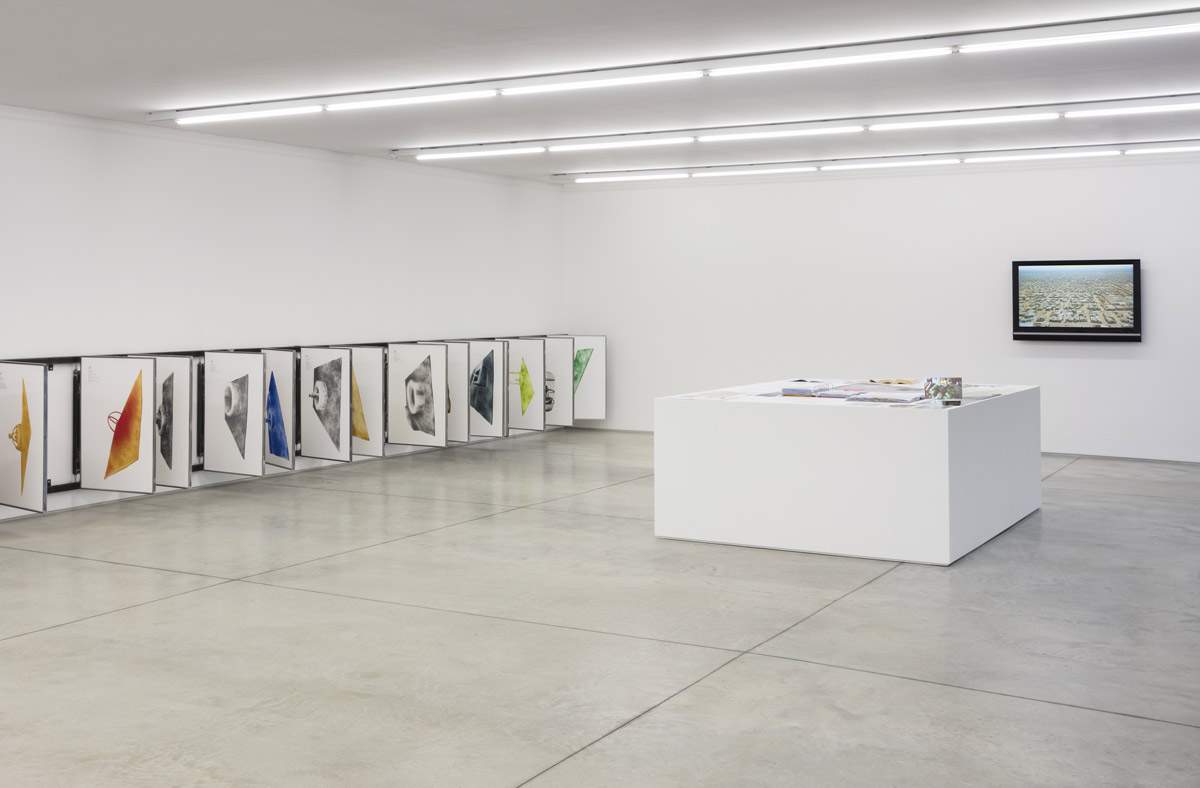Reggio Emilia's Collezione Maramotti changes shape: here's the big rearrangement with the best of contemporary
As of March 3, 2019, ten rooms on the second floor of the permanent exhibition of Reggio Emilia’s Collezione Maramotti, a private collection of contemporary art that includes hundreds of works of art created from 1945 to the present, have been rearranged to allow the public to become acquainted with some of the projects presented during the first ten years of its opening. These include Enoc Perez (2008), Gert & Uwe Tobias (2009), Jacob Kassay (2010), Krištof Kintera (2017), Jules de Balincourt (2012), Alessandro Pessoli (2011), Evgeny Antufiev (2013), Thomas Scheibitz (2011), Chantal Joffe (2014), and Alessandra Ariatti (2014). A rehang that offers visitors an overview, albeit partial, of the various solo exhibitions that have taken place.
The various projects have been united by an abiding interest in the evolution of pictorial language, a focus on new forms of expression, and a questioning of the status of the work of art, accompanied by a strong tension toward the future.
The first project exhibited in 2008 was Enoc Perez’s Casa Malaparte: two large canvases intended to lead to a reflection on the role of painting today, through the reworking of an icon of Italian modernist architecture.
The project by twins Gert & Uwe Tobias presents large-scale woodcuts, drawings and sculptures, where iconic elements drawn from the folk culture of Transylvania, their homeland, are interwoven with images from European folklore and a contemporary formal language that finds its artistic antecedents in early Modernism, Klee, Constructivism, and Art Brut.
Jacob Kassay ’s silvery, reflective canvases are characterized by monochromaticism and reflection of color, movement, and form and are codified in a new form of abstraction with reference to photography. By Krištof Kintera is the large ground installation entitled Postnaturalia, which aims to reflect on the relationship between nature, science and technology within a social and political analysis of our time.
The central theme of Alessandro Pessoli ’s three large canvases is the Crucifixion: his painting is eclectic, rich in historical memories and sedimentations, from Metaphysics to Surrealism to popular visual culture. Evgeny Antufiev ’s room is an excerpt from Twelve, wood, dolphin, knife, bowl, mask, crystal, bones and marble - fusion. Exploring materials (2013), a large and articulated exhibition designed by the artist as a perceptual experience of transformation for the visitor, in which materials and objects abandon their identity to re-enter an archetypal dimension; the artist uses materials such as fabric, crystals, meteorites, bones, insects, marble, and wood, and juxtaposes them with objects with no connection to each other, but creating installations that refer to alchemical operations and shamanic practice.
Thomas Scheibitz in 2011 created the project The River and Its Sources and exhibited three large abstract canvases that evoke the scene and elements of Suprematist theater and Bauhaus and a sculpture that appears to be a monumental version of a hieroglyph extrapolated from an unknown language.
In 2014, Chantal Joffe ’s Moll and Alessandra Ariatti ’s Legami projects focusing on portraiture exhibited in the first case portraits of a single figure in full view with loose brushstrokes, blending details of face, clothing and environment into a single pictorial flow, while in the second case groups of figures with hyper-photographic precision, intended to probe psychological depth and intensity of human interrelation.
In addition to this particular rearrangement, Collezione Maramotti is also offering Margherita Moscardini ’s exhibition entitled The Fountains of Za’atari until July 28, 2019, on the occasion of the Fotografia Europea 2019 festival. A project that the artist has been developing since 2015 starting from the study of refugee camps as urban realities destined to last. Margherita Moscardini worked outside and inside the Za’atari camp in Jordan between September 2017 and March 2018 and conducted a census of courtyards with fountains built by residents inside their homes. The artist’s project aims to generate a system for selling sculptures that reproduce Za’atari’s fountain courtyard models on a 1:1 scale: these can be acquired by city administrations or institutions and presented in European public spaces. The creator of the fountain will be the direct beneficiary of the sale, thus generating a virtuous system of supporting the field’s economy.
For info: www.collezionemaramotti.org
Image: Margherita Moscardini, The Fountains of Za’atari, Exhibition view / Exhibition view. Maramotti Collection, 2019. Ph. Andrea Rossetti
 |
| Reggio Emilia's Collezione Maramotti changes shape: here's the big rearrangement with the best of contemporary |
Warning: the translation into English of the original Italian article was created using automatic tools. We undertake to review all articles, but we do not guarantee the total absence of inaccuracies in the translation due to the program. You can find the original by clicking on the ITA button. If you find any mistake,please contact us.




























